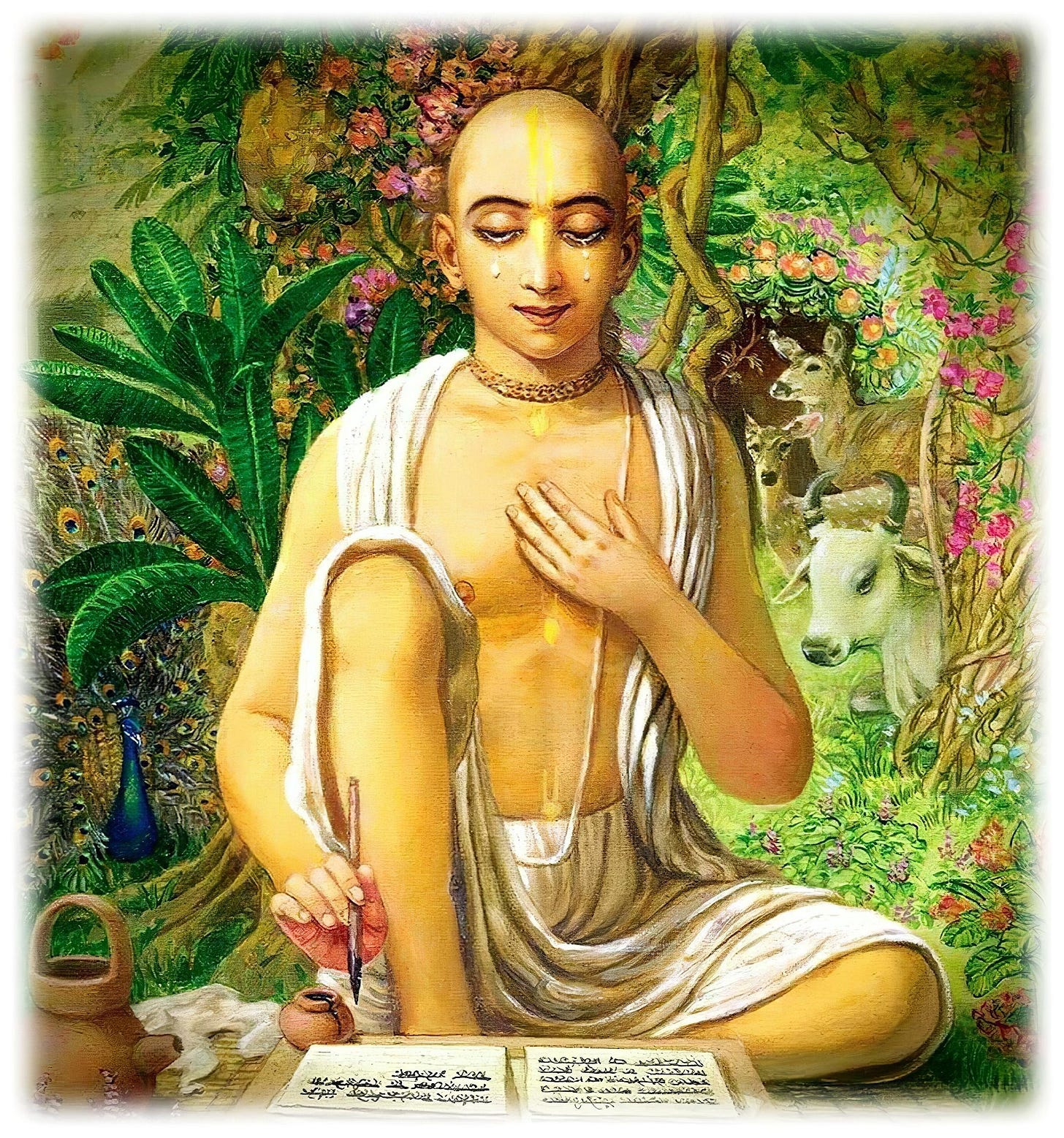How our ācāryas can write about the past and future, or even what happened in other universes
The story of Gopa Kumara happened a long time ago, in a different universe. Some accept it as an allegory created by Srila Sanatana Goswami to explain the principles of bhakti. However, it's not so.
In the Brihad Bhagavatamrta, Srila Sanatana Goswami narrates the story of Gopa Kumara, a cowherd boy from Vraja who, thanks to the blessings of his spiritual master, is capable of traveling all over the universe, experiencing exalted stages of material and spiritual existence. He starts by becoming a king on this planet and later is promoted to the post of Indra in Svargaloka. After becoming dissatisfied with this position, he goes higher, being accepted in Maharloka, and meeting the four Kumāras in Tapoloka. Eventually, he goes all the way to Brahmaloka, where he is eventually invited to accept the post of Lord Brahma. However, still dissatisfied, he moves to the impersonal Brahmajyoti, and from there to the planet of Lord Sadha-Shiva and eventually to Vaikuṇṭhaloka. However, still dissatisfied due to not being able to relate freely with the Lord, he comes back to this material world, and from here he attains Goloka Vrindavana, the supreme destination.
The story of Gopa Kumara is not only incredible, but it happened a very long time ago, in a different universe. Because of this, some accept it as an allegory created by Srila Sanatana Goswami to explain the principles of bhakti. However, it's not so.
There is a difference between the way perfect souls compose transcendental literature and the way a conditioned soul may write a book. A conditioned soul writes based on theoretical knowledge, things he or she learned from other books or other sources, or sometimes from simple imagination. Someone may write a book explaining verses from the Bhagavad-Gita, but it doesn't mean he was there with Arjuna hearing it from Krsna.
For a perfect soul, however, things work differently. In the Bhagavad-Gita, Krsna describes such pure souls as jñāninas tattva-darśinaḥ, the seers of the truth. Pure devotees can directly experience the spiritual platform, and therefore, when they write transcendental literature, they write based on direct experience, and not just through theoretical knowledge. When Śukadeva Goswami was narrating the Srimad Bhagavatam to Maharaja Pariksit, for example, he was not only repeating the words he heard from Vyāsadeva, he was instead directly seeing the pastimes and narrating based on his vision. That's why even Vyasadeva and Nārada Muni were so eager to listen to the Srimad Bhagavatam spoken by Śukadeva Goswami, hearing it as if it was being spoken for the first time.
Not only can such liberated souls experience Krsna's pastimes, but they can see events that happened in different parts of the universe, or in different universes, or even see events that will happen in the future. Therefore, when they are asked to explain a philosophical point, they often prefer to narrate some event that happened in the past, where great personalities discussed it.
In the 2nd canto of Srimad Bhagavatam, for example, when Pariksit Maharaja asked Śukadeva Goswami about how the Supreme Lord creates, maintains, and destroys the material universe through His energies, Śukadeva Goswami preferred to answer the question by narrating a conversation between Lord Brahma and Nārada Muni from the beginning of the universe.
It may sound shocking at first, but when we think about it, it sounds quite natural. Even ordinary mystics can see the past and future, and it is therefore not surprising that pure devotees can see even further. All kinds of mystical powers actually come from connection with Krsna through His different forms and potencies. In the Srimad Bhagavatam is described how a yogi acquires the different mystical perfections by meditating on certain aspects of the Lord. A pure devotee is directly connected with Krsna in His personal form, and therefore, his vision goes much further than an ordinary yogi.
When we consider this point, it sounds quite natural that an exalted ācārya like Srila Sanātana Goswami could narrate a story that happened so long ago in a different universe. To be more precise, the Brihad Bhagavatamrta was first spoken by Maharaja Pariksit to his mother Uttara. The story was that there was a gap between the time he finished hearing the Srimad Bhagavatam and the time he was bitten by the snake. During this time, he was approached by his mother, who asked him to describe the essence of what he heard. In his meditation, he could see the story of Gopa Kumara, as well as the story of Nārada Muni, and he described these facts to his mother as an answer to her question. Srila Sanātana Goswami, in turn, was able to access this in his meditation and thus revealed to us this story that explains the principles of devotional service.
Similarly, Srila Bhaktivinoda Thākura describes in the Jaiva Dharma events that happened shortly after the disappearance of Lord Caitanya, events that happened long before his birth, and that haven't been registered in any previous book. This doesn't mean that the Jaiva Dharma is an allegorical book. Rather, it indicates that he used the same transcendental process to access this knowledge and reveal it to us.
Books like the Brihad Bhagavatamrta and the Jaiva Dharma should thus not be accepted as just allegories, but as historical facts, that factually happened in the past of our planet or universe, or in other universes, were perceived by our ācāryas in their meditation and described to us as examples to help us understand the principles of devotional service.


